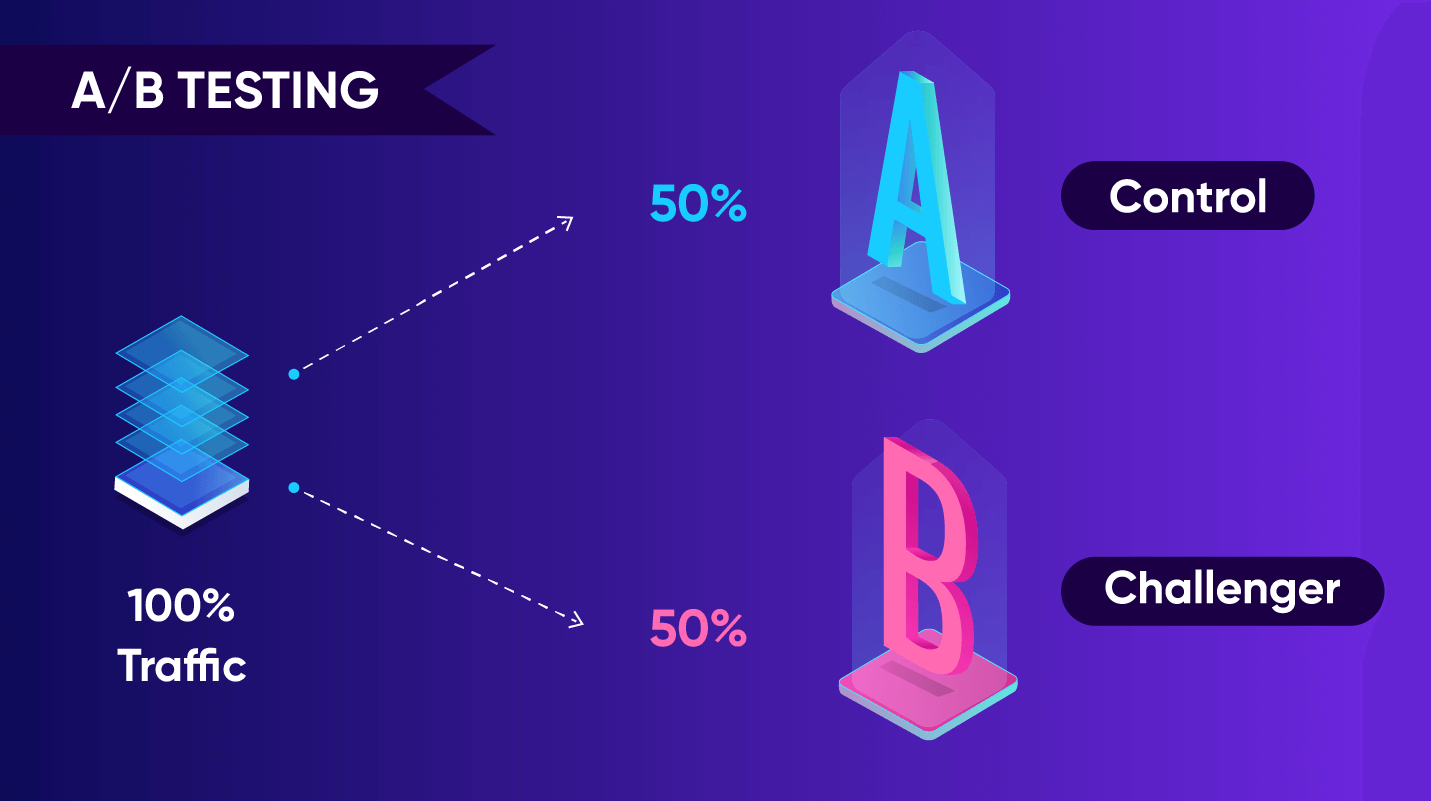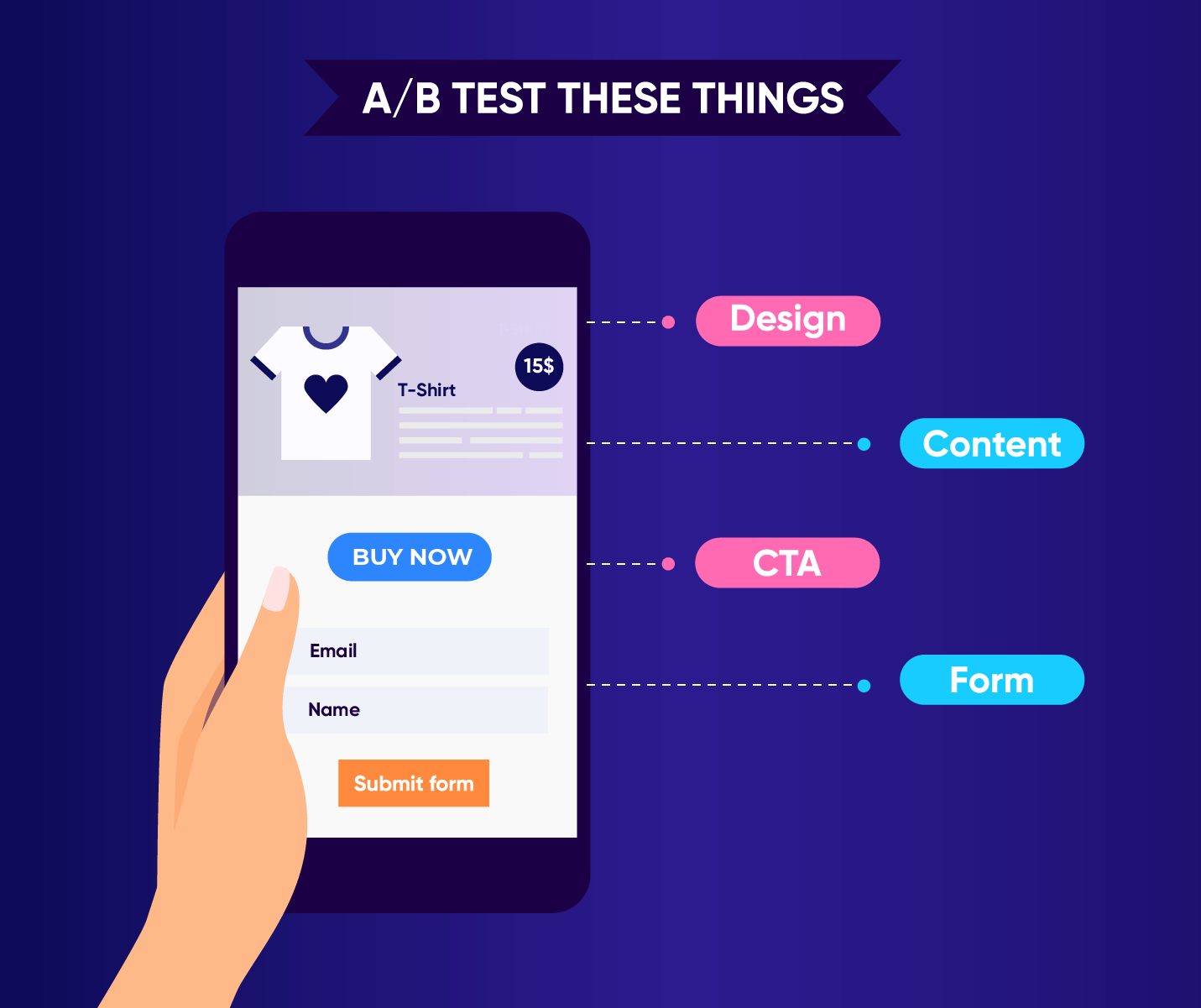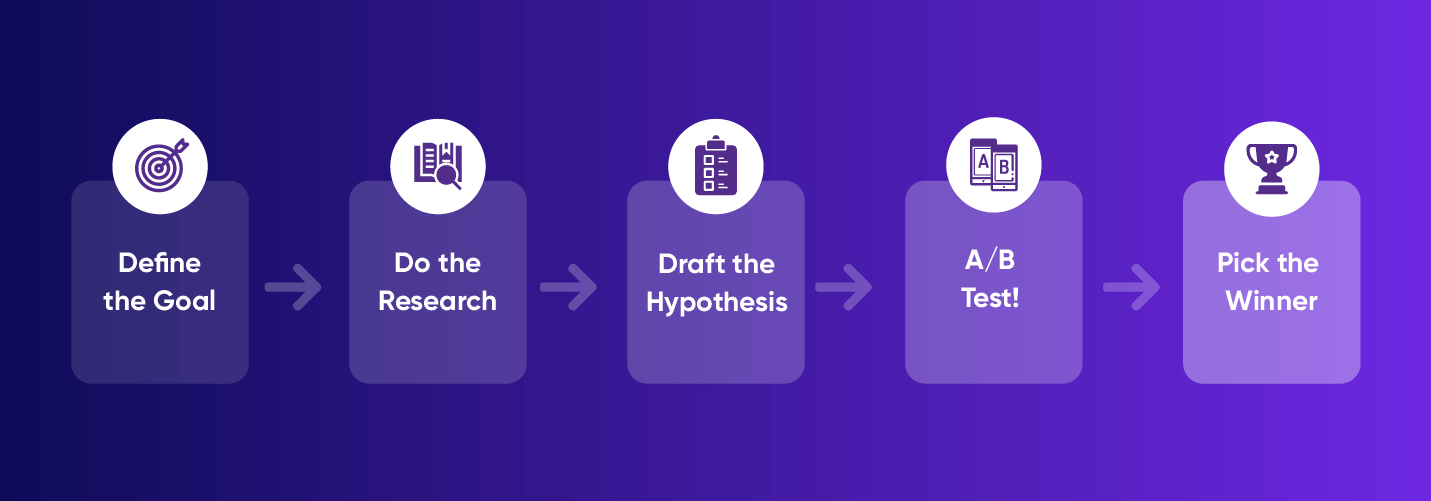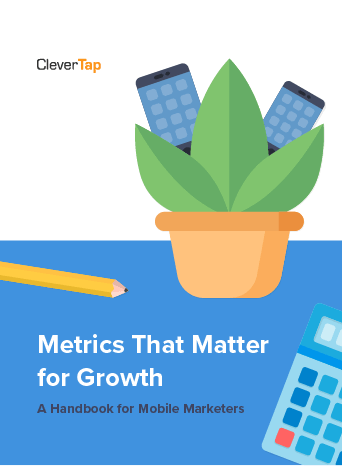Learn how you can Unlock Limitless Customer Lifetime Value with CleverTap’s All-in-One Customer Engagement Platform.

How do you know which is the better call-to-action button? Or which sign-up form is more effective?
In such a competitive landscape as mobile marketing, there’s little room for intuition. Especially since you have a wide array of tools that get you the data you need to make an informed decision.
A/B testing is one such tool. And this article will walk you through how to design A/B testing effectively so you don’t waste resources wondering what works and what doesn’t.
A simple way to define A/B testing is you make a change in one element of your marketing campaign and compare it to a version where that one element did not change.
An element can be a CTA button, a chunk of text, an image, any single part of a marketing message. Then compare the data to see which version is more effective.
This is a tried-and-true process used by marketers to measure the effectiveness of one test variable against another.
In actual use, this means pitting one email or push notification or CTA against another in order to quantify which leads to a more effective user response. The measured change in impact of one variable can be measured in click-through rates, time spent on page, form submissions, or any other conversion metric.
While we’ve tackled A/B tests (or split testing) before, we still need to define A/B testing design, and how important it is to construct your tests in a manner that leads to actionable insights.
What is A/B testing’s entire point? To figure out the best variation to use and when you land on a winner, keep using it until it stops delivering results.
If you’re going to be testing a variation for effective marketing, then you need to have three variables in place. (And if these variables sound like they come from an elementary school science class, that’s because A/B tests are indeed scientific experiments!)
Every A/B test needs an independent variable, a control variable (or control group), and a dependent variable.
There are basically four main categories you should be testing in your mobile marketing campaigns:

Possibly the most important element of any campaign, the CTA (or call-to-action) is what impacts your conversion rate. Everything on your creative should lead the app user to tap the CTA.
The CTA can take many forms, depending on what constitutes a conversion in your campaign: it can be a download, registration, purchase or any action that benefits your brand.
Your A/B tests can focus on:
If you’re sending an email, the subject line is the first thing you should test.
The rest of your A/B tests can focus on:
Check out our best practices on copywriting for mobile marketing.
Design is another huge influencer in marketing. If the images and layout aren’t conducive to reading your message, then all things fail.
Your A/B tests can focus on:
Remember that forms are a staple for lead generation and are quite effective when you want to harvest email addresses in exchange for a valuable resource. Use A/B tests to ensure the user experience doesn’t break down at your form by:
In a previous blog post, we detailed seven more A/B tests you can do to increase user engagement.
These tests include:
Just because you can test everything we listed above doesn’t mean you should.
After all, there are lots of best practices available that can give you advice on anything from using effective colors for CTA buttons to crafting text for retention-boosting push notifications.
So use those tips as guidelines and test only when you have a hypothesis that needs to be proven.
Your A/B test can be created by using this simple framework:
What do you want the user to accomplish? What tests will help you achieve that goal?
What are your current metrics? Some examples include your click-through rates, the number of users you sign up within a given period, and so on. Establish a baseline so you know when the needle moves because of your testing or simply a fluke of your current process.
Decide the metric you’ll be measuring beforehand and include this metric in your hypothesis.
Some examples of hypotheses include:
Write out your hypothesis in a way that is measurable, where results can easily be shown to have succeeded or failed.
This is where the rubber finally meets the road and you experiment with variations.
Some tips to keep in mind when choosing your variations:
Finally, using the metric and the goal you specified above, look at the data and find the obvious winning variant — the one that resonated best with your target audience. And use this winner until it stops giving you worthwhile results.
There are a ton of A/B testing tools you can use to test your website and online marketing materials. Even when you get into a niche like mobile A/B testing, there are tools of every type and stripe — from basic split testing packages to all-in-one mobile marketing platforms.
We would be remiss however if we didn’t mention that CleverTap has a powerful A/B testing functionality that allows you to:

Metrics That Matter for Growth: A Handbook for Mobile Marketers